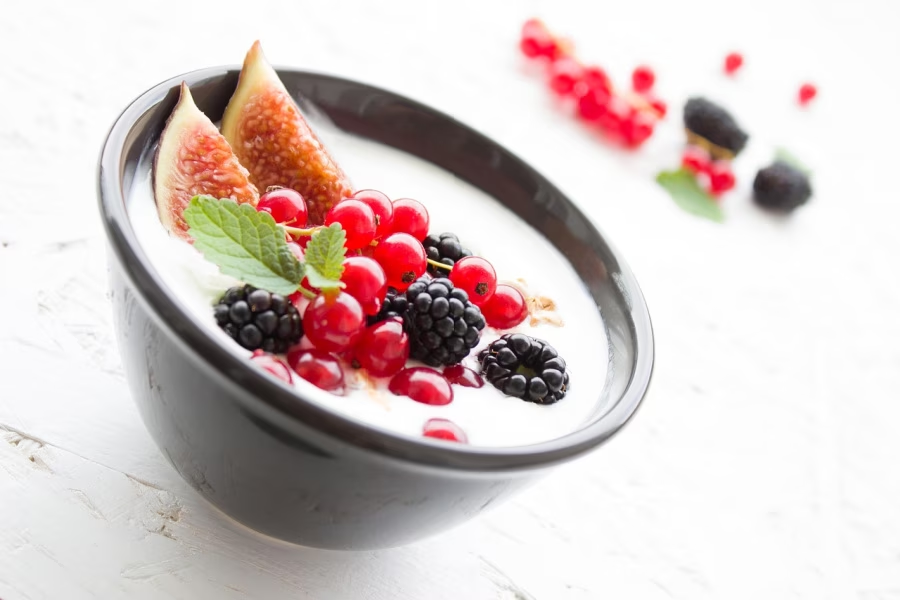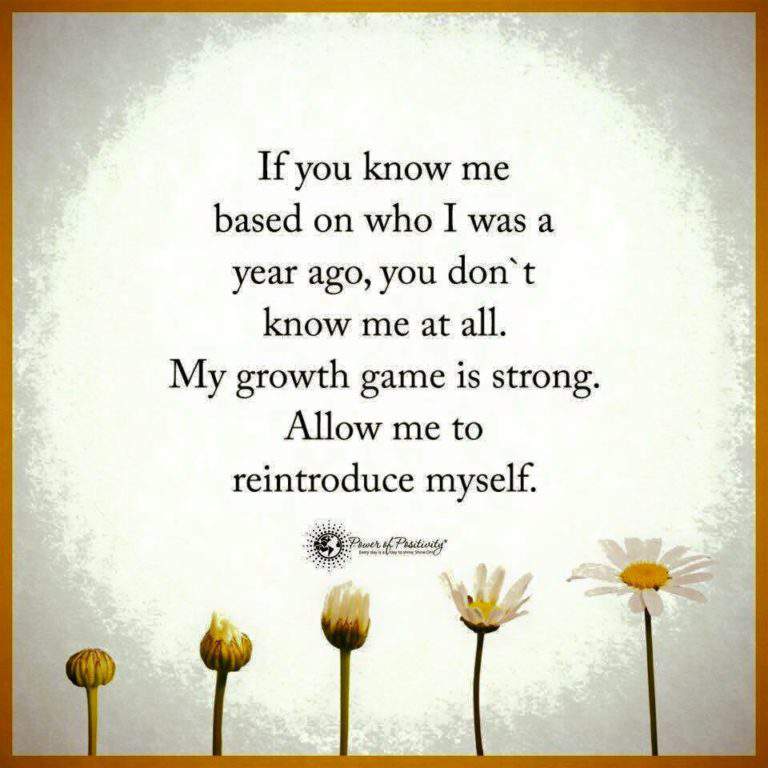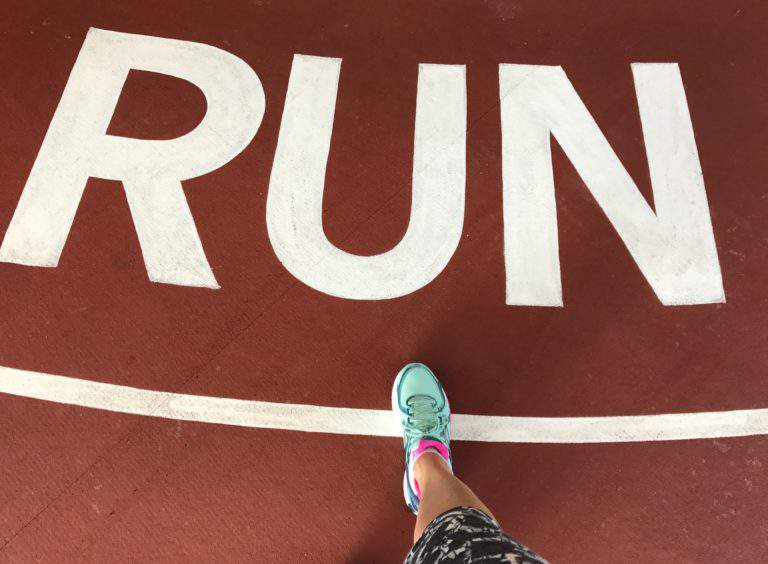3 ways I am reducing the highly-processed food in my diet
It’s funny how one thing leads to another. You start out working on one project and end up tackling another goal entirely.

As you may recall, I recently set a Learning & Growth goal to take the mindbodygreen coaching course. In preparation for the course, I was sent a recommended reading list. I chose to start with Changing to Thrive, by James O. Prochaska, PHD, and Janice M. Prochaska, PHD.
The authors’ website describes the book like this:
Changing unhealthy behaviors is easier said than done. If you’re like most of us, you have already made repeated attempts to change your lifestyle and improve your well-being without lasting success. You may attribute those failures to things like lack of motivation or the “wrong genes.” But it’s more likely that you simply don’t know how to change.
In this groundbreaking book, James O. Prochaska, PhD, and Janice M. Prochaska, PhD, guide you through a six-stage process designed to help you assess your readiness to change, then tap the inner resources necessary to thrive physically, emotionally, and socially. Backed by countless research studies, the stages of change model, developed by James Prochaska in collaboration with Carlo DiClemente, PhD, has revolutionized the field of behavior change.
Through interactive exercises, Changing to Thrive will help you progress through the stages of change and learn that you have the power within to thrive.
To get the most from the book, I decided to put the exercises into practice in my own life using a Health & Fitness-related habit that I have long wanted to change yet have made little progress on: reducing the amount of highly-processed foods I eat.
Using the exercises in the book, I quickly moved through the early stages of change (Precontemplation, Contemplation, and Preparation) to Action. While I had been bouncing back and forth between Precontemplation and Contemplation for years, armed with a better understanding of the change process, I was able to move quickly through three stages to Action in a matter of days.
So here’s what that looked like in abbreviated form. If you are interested in better understanding or implementing the stages of change, I highly recommend you read Drs. Prochaska’s book.
Moving from Precontemplation to Contemplation
In order to get from Precontemplation (not ready to change) to Contemplation (getting ready to change and intending to take action within the next six months), I needed to increase the pros of reducing highly-processed foods in my diet. With the help of the book and the internet, I made a list of 29 expected benefits in the areas of physical, functional, financial, social, and emotional well-being…things like reduced risk of high blood sugar, more energy, lower healthcare costs, having a good influence on my family’s eating habits, better self-esteem, and improved impact on the environment…to name a few.
Once I had a clear picture of why I wanted to reduce highly-processed foods, it was important to look at what was holding me back. To do that, I made my list of cons:
- having to give up some favorite foods
- forgoing the convenience of packaged foods
- the difficulty of finding truly unprocessed food
In order to reduce the cons, I countered those fears with the following statements:
- I will have to give up some old favorites, but I will no doubt discover new favorites, as I try new healthier options.
- I will sacrifice some convenience in exchange for better health and freedom from worrying about the unhealthy foods I am eating. Also, there are some easy substitutions I can make that aren’t terribly inconvenient.
- It would be nearly impossible to give up all processed foods, but I can quite easily reduce the amount of highly-processed foods I eat.
Moving from Contemplation to Preparation
In order to move from Contemplation to Preparation (ready to take action in the next 30 days), I set some specific goals and prepared a plan of action. The three goals I chose were actions that I felt would ease me into the big-picture goal and that were effort-focused, achievable, and sustainable for me:
- Replace my current peanut butter with a more natural peanut butter. I selected Adams No-Stir Peanut Butter, which contains 2 percent or less vegetable monoglycerides (markedly less than my current favorite) and no added sugar. It still has great flavor and does not separate like other even less processed options.
- Replace my current flavored yogurt with plain greek yogurt, which I will sweeten with vanilla extract and fresh or frozen fruit.
- Replace my nightly treat (usually a store-bought cookie or ice cream) with homemade treats, which I will make using the healthiest ingredients that will still satisfy me, such as this recipe for Peanut Butter Banana Chocolate Chip Oatmeal Bars. While the recipe does call for ½ cup brown sugar and up to 1 cup of semi-sweet chocolate chips, all other ingredients are healthy real food items…and no flour.
Moving from Preparation to Action
As I move from Preparation to Action (behavior change made within the past six months), there are some things I can do to improve my odds of success:
- Tell people about my commitment to change…as in writing about my plans in this blog post and talking about it with my friends and family.
- Clear my cupboards and refrigerator of highly-processed foods and keep them stocked with more natural options.
- Research some fun new recipes that will keep me excited about my goal.
- Reward myself for each success, however small. This could be as basic as positive self-talk, “Good job on making a delicious healthy meal from natural foods,” or more extensive, like treating myself to a favorite activity or item for larger accomplishments.
Moving from Preparation to Maintenance and/or Termination
That leaves me with two remaining stages of change: Maintenance (doing the behavior for more than six months) and Termination (being confident with the change, not tempted to relapse). I suspect I will easily reach Termination in regards to the peanut butter and yogurt changes. Sticking to my resolve to eliminate my nightly pre-packaged dessert may require a little more effort; however, I still anticipate success. As I get further along this journey, I’ll check back and let you know how it is going.
Your turn
- Have you had long-term success changing a lifestyle habit? Do you consider yourself in Maintenance (it’s been more than 6 months but still requires some vigilance) or Termination (you’re no longer tempted to relapse)?
- Do you have any habits you’ve been wanting to change but just aren’t ready yet?
- Do you have any favorite substitutions for a highly-processed food?
- What else is on your mind? Anything at all; I just love to hear from you.
Image by Bernadette Wurzinger from Pixabay







Hi Christie, thanks for such an informative and helpful post. It is so difficult to change ingrained habits, isn’t it? This month I wanted to get back into my daily walking so I started a FB group for support but also to encourage others. I like your thoughts the Pros and Cons of change and putting a positive outlook on the changes we need to make. Thanks so much and I’m sure you will see the rewards in your health reducing the highly processed foods. Have a great week. x
Thank you for the encouragement, Sue. A FB group is a great way to offer each other support and to ensure that you stick to your goal of walking daily. It’s so warm here right now that outdoor walking is almost out of the question. Luckily I have other options to keep me moving! I hope you have a lovely week!
What a great way to think about it. I have to make some changes to my diet (although the peanut butter and yoghurt switch was made yonks ago – once you get used to natural PB you’ll never go back) but while I’ve known I’ve got to do it, I haven’t done. We eat very little processed food and cook most things from scratch, but it’s a head thing with me and I think your way of listing out the pros and cons and thinking that way could be a way of getting over the head thing.
I find that the toughest part of most change is a head-thing for me too, Joanne, and that building a detailed pros list can help me make that mental switch. Another trick I learned was to give myself credit for the preparation stages that don’t actually equate to action…working on that headspace to prepare for change.
Hi Christie – I love the intentionality of this, and how you’ve picked things that are do-able. Aiming high and maybe slipping back a little here or there still means that you’ve made marked changes that tick the boxes you’ve set for yourself. I’m a big fan of moderation and the occasional treat – that way I eat healthy for the majority of the time and allow myself to enjoy some of that processed “poison” here and there. Good luck with it all and the new course.
Thanks for the encouraging words, Leanne. I agree that moderation and the occasional treat are keys to enjoying life and good health. I definitely will not give up ice-cream and probably other store bought treats either. I just plan to remove them from my daily at-home routine and make them occasional treats.
Hi Christie, that sounds like a very good course & book! I’m trying to make some changes myself with my eating right now. Though I cook and eat healthy meals, I had slipped into stress snacking and my recent trip to Fiji highlighted to me how much extra weight I’m now carrying as a result. So, time to get control again. I find it really hard to lose weight but intermittent fasting has worked for me before, so that is where I’m starting. I’m not aiming to be skinny minnie, I just want to feel better in my own skin. It’s a mind game really isn’t it? All the very best with your reduction of processed food and the course! Thanks for linking up with #WWWhimsy & have a great week! xo
Stress snacking and traveling are tough ones, Min. I too am past wanting to be ultra thin; I just want to feel good about the way I am treating my body and my health. Of course, it’s a bonus if my clothes fit better. Thanks for the encouragement and good luck to you with the changes you are making!
I feel like I eat fairly healthy, but I know I have too much processed food in my diet. So is whole wheat flour considered ok? And have you tried the oat and chocolate chip bars? Good luck!
Processed food is a tough thing to avoid altogether (almost impossible in today’s world), but I know I can reduce the amount fairly easily and still enjoy my food…which you know I love! Whole wheat flour is less processed than white flour for sure. I did make the banana chocolate chip oat bars, and they are yummy. Not as fluffy as flour-based baked goods, but they definitely satisfy my sweet tooth.
I like the educational way you have approached this and that you are making steps that are slow and steady and contemplative.
I have so few choices for eating these days because of my reconstructed mouth I need to have a mix of eating for pleasure and nutrition and for a former comfort eater I am doing well.
May this work well for you going forward.
Denyse.
Thank you, Denyse. In this case, slow and steady definitely wins the race. I feel lucky that I do not have any health-related food restrictions. I too want a mix of pleasure and nutrition in my eating. Life is supposed to be enjoyable, and eating is a big part of life.
I loved reading this Christie. I’m in the process of reducing sugar, as I can’t really get motivated to go to no sugar completely. I’m also reducing carbs. It was just a bit of an experiment but I’ve found myself really enjoying finding foods with ingredients that I wouldn’t usually use. Part of the process is giving up processed packaged foods as they usually contain sugar.
Your comment “I will have to give up some old favorites, but I will no doubt discover new favorites, as I try new healthier options” jumped out at me and I had to comment. This was an unexpected bonus that I have found so far. I’ve found great healthy snacks to replace the traditional snacks that I had been eating. It’s been a bit of an adventure. I wrote a post about it this week but decided to hold it back for a week or two.
It is surprising how many processed foods include added sugar, isn’t it Jen? I wholeheartedly support your decision to reduce sugar rather eliminate it completely. I have a sweet tooth that will not be denied. I am trying to rely on natural sugars (like fruit) more than added sugar. It’s a tough one though. I am encouraged to hear that you have found making those substitutions to be an adventure. That’s what I’m hoping for.
Interesting way to evaluate your process from idea to action. I’m sure I’ve gone through those steps, but never made note of each step.
Have you had long-term success changing a lifestyle habit? Yes, since the beginning of the pandemic we’ve changed the way in which we eat, cooking at home all the time. I haven’t been out to eat in a restaurant, nor gotten carry-out, in almost a year now. For us the eat-at-home change alone has made us healthier, my husband has lost 70 lbs from doing it. I’d say there’s no chance of relapse for us.
Thanks for the suggestion of Adams No-Stir Peanut Butter, btw. I’ll look for it.
I am impressed that you haven’t eaten out for nearly a year, Ally. We have definitely cut back on restaurant eating in the past couple of years, but we do enjoy a good restaurant meal on occasion. I do know that I tend to overeat when we go out and that I have no idea how fresh (or what) all the ingredients in my meal are. Congratulations to your husband on losing so much weight from just that one habit change. It just goes to show you…
Hi Christie, Malcolm and I went through these stages instinctively when we kicked our diet coke habit about six months ago. Having each other as an accountability partner helped tremendously. We have now moved on to eliminating sugar substitutes, which is proving to be more problematic. We can’t seem to reach the ‘Action’ stage but will keep trying. Thanks for summarizing the book and for putting the steps in writing. I’ll refer back to it for motivation whenever we get stuck. Best of luck to you.
That’s great that the two of you gave up Diet Coke. I don’t drink a lot of it, but would find it hard to give it up entirely at this point. That said, once I feel confident that I am in the maintenance stage of the three changes I have chosen, Diet Coke could be next. I don’t know that you can get any more processed than sugar-free soda! Good luck with your efforts to give up sugar substitutes. I hope these stages of change exercises are helpful.
I have cut out alcohol (but I’m not happy about it) and I’m meant to be on low cholestorel (but the no alcohol has made me a little lax in the food dept). So, I’m a work in progress. I can already tell you to p[at yourself on the back at being so much better than me,…..#WWWHimsy
I can see why you wouldn’t want to cut out alcohol and any favorite foods at the same time, Lydia. One thing at a time is my motto. The book I mentioned (Changing to Thrive) has a section specific to alcohol and another for healthy eating, if you are interested.
I too have been slowly eliminating highly processed foods in my diet. Luckily, I don’t eat a ton of highly processed foods but it’s still at the point where I have to consciously think about it especially when grocery shopping or I just fall back on my old buying habits.
I have been inspired by your posts on reducing highly-processed foods, Joanne, so thanks for sharing those. This particular book I was reading says it takes six months or more to get to the Maintenance or Termination point for most habit changes.
We adjusted our diet last fall due to a few health issues my husband was having. At that time, we went gluten free and he also went dairy and sugar free so I have not purchased any processed food since that time. What a difference it has made in both of our lives! Now that we are six months in, we can’t imagine going back. Eating “clean” has been a game changer for us! Thanks for sharing this great information!
Hello Laura. Thanks for stopping by and sharing your experience. It is encouraging to hear that after six months, eating clean is an engrained habit for you and that it’s had such a positive impact on your lives. Now that I’ve made these small changes, I can see myself making additional improvements in this area.
That book sounds really interesting, so much so that I’ve ordered a copy.
Changes I’ve successfully made? Gave up smoking in my mid-thirties, and Diet Coke a couple of years ago, and while I still drink alcohol occasionally, it’s more like a once-a-year glass or two treat, and I don’t miss it otherwise.
But there’s still many changes to make, so I shall enjoy reading, thanks for the recommendation Christie 🙂
I hope you find the book as useful as I did, Debs. That is so impressive that you gave up smoking. Thankfully, I didn’t pick up that habit, but I know from some family members how challenging it is to quit. I don’t drink a lot of Diet Coke, but that is one of my guilty pleasures…one that I may look at giving up down the road in my quest to consume fewer highly-processed foods.